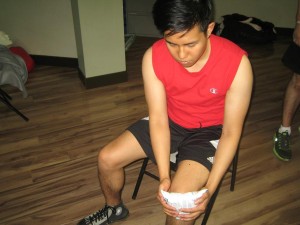The overall integrity of the knee usually depends on the healthy function and stability of the bones, ligaments and cartilage that comprises this weight-bearing joint. The combined actions of weight bearing and bending will place significant stress on the knee. Any injury to the knee cartilage, bones or ligaments can trigger pain and usually limit the overall functionality of the joint.
Anterior cruciate ligament injury
The ligaments are best described as fibrous bands of tissue that support the bones in place. The four ligaments that support the bones of the knee joint in alignment include the ACL or anterior cruciate ligament. The anterior cruciate ligament runs in a diagonal manner across the front and middle area of the knee. The ACL along with the posterior cruciate ligament are responsible for bending and straightening the knee. Additionally, it also provides support for the twisting of the knee.

An injury to the anterior cruciate ligament can range from mild sprains to complete tears. The indications of ACL injury include pain, swelling, limited knee motion, tenderness and difficulty walking. When it comes to complete ACL tears, the knee joint is slack. Minimal stretching of the ACL can respond to bracing and rest. Partial or complete ACL tears would require surgical repair. You can learn more about ACL injuries by enrolling in a first aid class today.
Meniscal tear
The meniscus is the cartilage that cushions the femur and the tibia. Abrupt, forceful twisting of the knee or a direct blow can cause a meniscal tear. Older individuals with current degenerating cartilage will develop meniscal tear during minor trauma. Meniscal tears are among the most prevalent knee injuries. The usual symptoms include knee pain, joint stiffness, swelling, limited capacity to bend and extend the knee and a feeling that the knee becomes stuck. In most cases, a meniscal tear does not disrupt with the walking capability of the individual. Take note that a minor meniscal tear can heal as long as the individual is given enough time to rest. As for significant tears, it would surely require surgical repair.
Patellar fracture
The patella serves as a bony shield for the knee joint. It also functions as a point of connection for the thigh muscles of the front part of the leg. Patellar fractures usually occur due to a direct blow to the front of the knee. High impact can shatter the patella into the pieces.
The indications of a patellar fracture include severe pain, swelling of the area over the kneecap, bruising and inability to walk or straighten the knee. Most cases of patellar fractures need surgery in order to hold the bone together to facilitate the healing process. Typically, no weight bearing activity can be carried out during the healing process of the bone.
